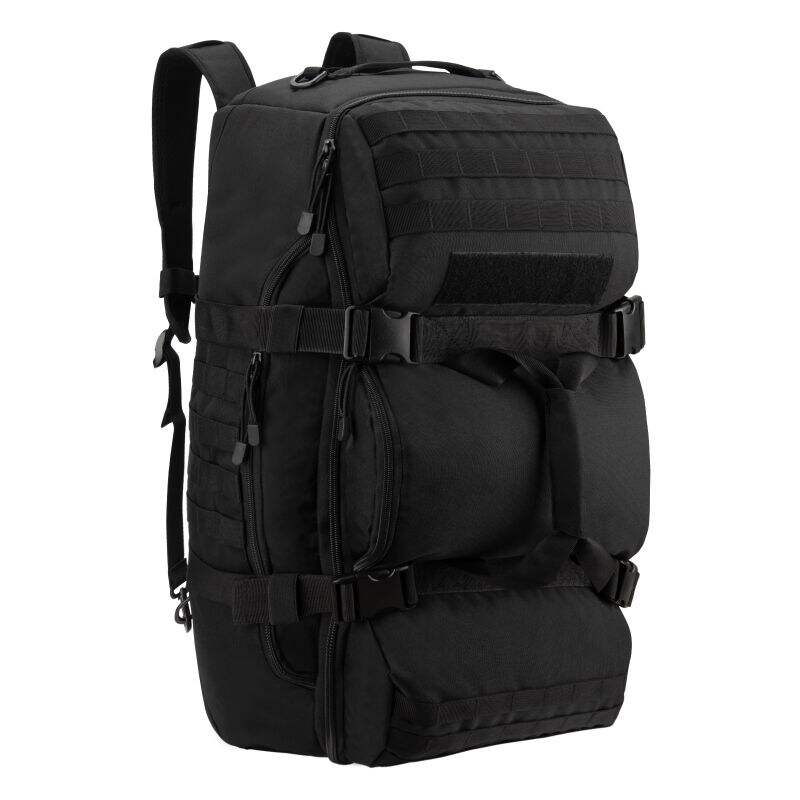The Ultimate Freedom: Embracing Solo Adventures with the Right Gear
Embarking on a solo journey represents more than just traveling alone – it's a transformative experience that demands the right equipment. At the heart of every independent traveler's arsenal lies the solo travel backpack, a companion that can make or break your adventure. Modern wanderers understand that choosing the perfect backpack isn't just about having a place to store belongings; it's about embracing a lifestyle of freedom, flexibility, and self-reliance.
The relationship between a solo traveler and their backpack is unique. It becomes more than just luggage; it transforms into a mobile home, an office, and a lifeline all rolled into one. As the popularity of independent travel continues to surge, the importance of selecting the right solo travel backpack has never been more critical.
Key Features That Define an Ideal Solo Travel Companion
Design and Ergonomics
The architecture of a solo travel backpack plays a crucial role in ensuring comfort during long journeys. Weight distribution systems, padded shoulder straps, and adjustable hip belts work together to prevent strain and fatigue. Advanced designs incorporate ventilation channels that keep your back cool during humid climates or strenuous hikes.
Modern solo travel backpacks often feature front-loading capabilities, making it easier to access items without unpacking everything. This thoughtful design element saves time and frustration, especially when navigating through busy hostels or switching locations frequently.
Security Features
When traveling alone, security becomes paramount. Premium solo travel backpacks come equipped with reinforced zippers, hidden compartments, and lockable sections. Some models incorporate slash-proof materials and RFID-blocking pockets, protecting both your physical belongings and digital information.
The ability to quickly access essential items while keeping valuables secure is a delicate balance that quality backpacks strike effectively. Many feature quick-access pockets for passports and travel documents, positioned close to your body for maximum security.
Organizational Mastery for Extended Adventures
Compartmentalization Strategies
The internal organization of a solo travel backpack can significantly impact your travel experience. Dedicated compartments for electronics, clothing, and toiletries help maintain order throughout your journey. Some backpacks feature removable packing cubes or modules, allowing travelers to customize their storage solutions based on specific needs.
Smart organization extends beyond mere compartments. Modern solo travel backpacks often include compression straps, expandable sections, and modular attachments that adapt to varying load sizes and travel durations.
Tech Integration
Today's solo travelers need to stay connected, and their backpacks should support this requirement. Built-in USB charging ports, cable management systems, and padded laptop sleeves have become standard features. These technological integrations ensure that digital nomads can maintain their workflow while exploring the world.
The best solo travel backpacks balance these modern conveniences with durability, ensuring that electronic components don't compromise the bag's structural integrity or weather resistance.
Versatility Across Different Travel Styles
Urban Exploration Capabilities
A well-designed solo travel backpack seamlessly transitions from rugged outdoor environments to sophisticated urban settings. Sleek profiles and convertible carrying options allow travelers to move confidently through cities without screaming "tourist." Some bags feature removable daypacks, perfect for city exploration while leaving larger gear secure at accommodations.
The ability to blend in while maintaining functionality is crucial for solo travelers who often switch between various environments and social situations. Modern designs incorporate subtle styling that works equally well on mountain trails or in museum galleries.
Adventure-Ready Features
When venturing off the beaten path, your solo travel backpack must be prepared for anything. Water-resistant materials, reinforced stress points, and all-weather covers provide protection in unpredictable conditions. External attachment points for gear like trekking poles or sleeping bags expand carrying capabilities without compromising the bag's core functionality.
The versatility extends to size adaptability, with many backpacks featuring expandable compartments that can accommodate additional gear when needed, then compress for everyday use.
Sustainability and Long-Term Value
Environmental Considerations
The modern traveler increasingly prioritizes environmental responsibility. Leading solo travel backpack manufacturers now utilize recycled materials, sustainable production methods, and eco-friendly packaging. Some brands even offer repair programs to extend product lifespan and reduce waste.
This commitment to sustainability doesn't compromise quality; instead, it often results in more durable products that can withstand years of adventure while minimizing environmental impact.
Investment Returns
While quality solo travel backpacks may represent a significant initial investment, their long-term value becomes apparent through continued use. Superior construction materials and thoughtful design features ensure longevity, potentially outlasting several cheaper alternatives.
The true return on investment extends beyond durability to include comfort, convenience, and reliability – factors that significantly impact the overall travel experience.
Frequently Asked Questions
What size solo travel backpack is ideal for extended trips?
For extended solo travel, a backpack between 40-65 liters typically provides adequate space while remaining manageable. The exact size depends on your travel style, climate considerations, and packing habits. Many experienced travelers recommend staying under 45 liters to ensure carry-on compliance with most airlines.
How should I properly fit a solo travel backpack?
Proper fitting involves adjusting the shoulder straps, sternum strap, and hip belt to distribute weight effectively. The backpack should sit comfortably on your hips, with the shoulder straps maintaining close contact with your body. Most importantly, the pack should feel balanced when fully loaded.
What are the most important features to look for in a solo travel backpack?
Essential features include durable water-resistant materials, comfortable carrying systems, secure lockable zippers, and well-designed organizational compartments. Additional considerations should include front-loading access, laptop protection if needed, and appropriate size for your travel style and duration.


